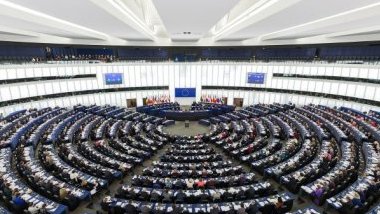A female president! On January 22, Greece saw a historic first with the election of Ekaterini Sakellaropoulou as President in the first round. More and more women are taking up important positions in the European Union, and the share of women MEPs has increased even more after the last elections (now 41%). Unfortunately, a (big) problem persists: the pay gap between men and women remains blatant in the EU.
The principle of equal pay has existed in Europe since 1957, thanks to the Treaty of Rome. Despite this, the pay gap persists today. The President of the European Commission, Ursula von der Leyen, had announced a new strategy on this subject. On Monday, January 13th, the first day of the first plenary session of 2020 in Strasbourg, a debate took place regarding this issue in the European Parliament.
Gender equality in the European Union is currently governed by Directive 2006/54/CE of the European Parliament and of the Council of July 5, 2006, of which the European Parliament has called – several times – for a revision.
The pay gap issue is complex. It is measured as the average difference between the gross hourly earnings of women and men. However, this calculation is far from taking into account all factors, such as the number of hours of unpaid work, for example. Although the pay gap varies from country to country, it is still a reality in the EU.
Furthermore, interpreting the numbers is complicated since, sometimes, a small pay gap does not correspond to more equality but to fewer women in the world of work. This is typically the case in Italy, where the pay gap is quite low (5%), but rather because women tend to do many more hours of unpaid work.
This first plenary session of 2020 was an opportunity for a lively debate on this subject. European Commissioner Helena Dalli proclaimed her willingness to fight against such discrimination: the pay gap stands at 16% on average between women and men in the European Union. She thus declared wanting to make new proposals during the first week of March on pay transparency, notably by introducing binding measures. More transparency is also what Frances Fitzgerald (EPP) wants, who insists on the need for such measures.
Evelyn Regner (S&D, Austria), Chair of the Women’s Rights and Gender Equality Committee mentioned that Equal Pay Day, which fell on November 4 last year, was anything but a day of celebration. She expressed her concern that in 2020 discrimination still exists because “women are paid less simply because they are women.” The same reaction was voiced by Kira Maria Peter-Hansen (Greens-EFA), the youngest MEP (21 years old).
Different political groups have different arguments since French MEP Sylvie Brunet (Renew Europe) suggested, that if there were more women in the labour market, Europe’s GDP could increase by 42%. The MEP then reminded the assembly of the importance of more social measures, especially on the integration of women in the labour market.
However, women don’t have “to be protected” as Isabella Tovaglieri (ID) emphasised, which would risk making them seem more fragile and not recognising their skills. Most of the female MEPs who spoke during the debate highlighted the problems (more difficult access to management positions, complicated family situations in the case of single-parent families, uncoordinated compensation systems) without necessarily finding solutions.
The actions to be taken by Ursula von der Leyen, the first woman to hold the Commission presidency, will be scrutinised by MEPs, who agree on the urgency of the situation. “The fact that women earn 23% less than men is the biggest theft in history”, said Isabella Tovaglieri (ID). Can concrete solutions be found?
To do this, men, who were rather absent during the plenary debate, will also have to take action. The majority of MEPs are, in fact, still men. The road to equality is still very long.



Follow the comments: |
|
